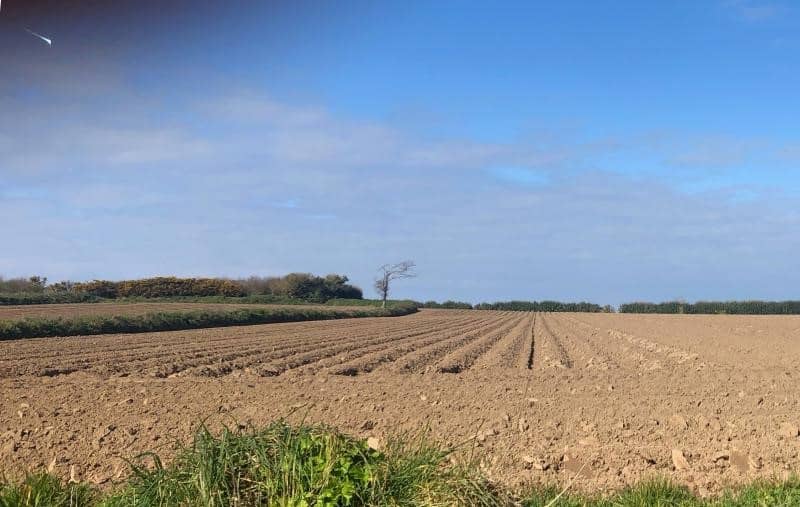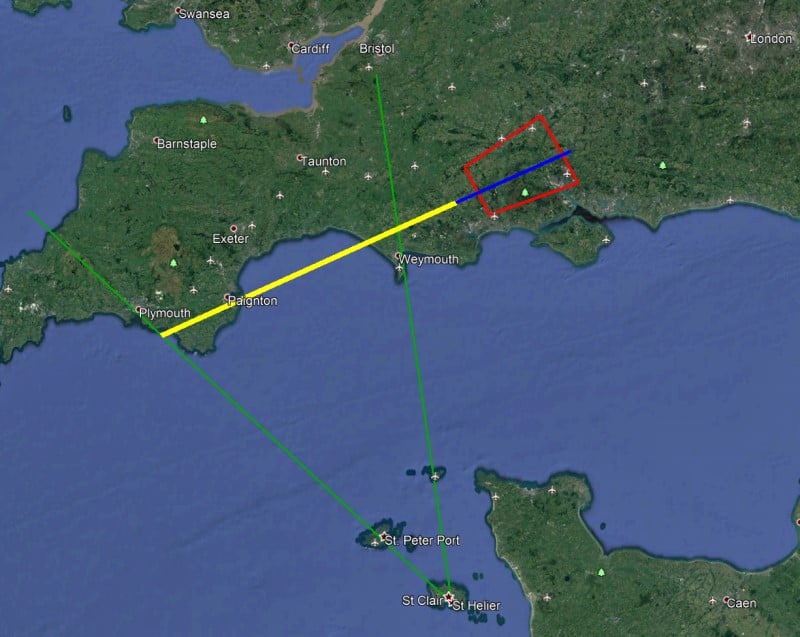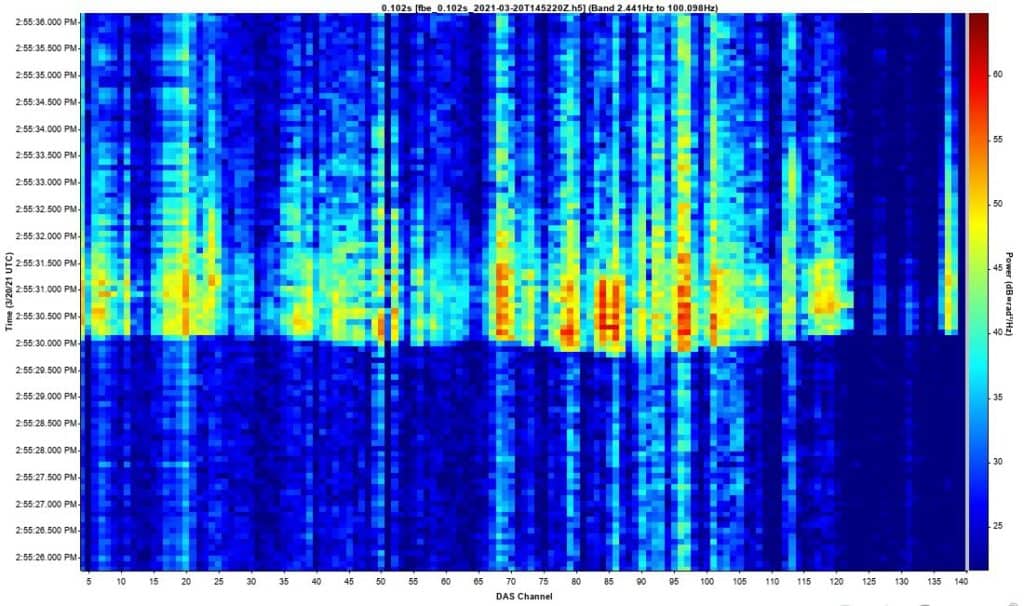OptaSense OLA System Records Meteor Shock Wave

The fireball captured from Jersey using an iPhone (Credit Emma & Kitty O’Prey) appeared on the British Astronomical Association website.
On the afternoon of 20th March, a fireball meteor passed over southwest England and its sonic boom was recorded on an OptaSense OLA2.1 Distributed Acoustic Sensing Interrogator system attached to a fibre running around OptaSense’s Winfrith site, in Dorset. Analysis of the signal arrival times at different channels showed that it passed to the north of Winfrith travelling on a bearing between east and northeast at a speed of around 4km/s; thereby setting a record for the fastest object ever tracked by OptaSense.
This information together with the time it was detected was passed to the UK Fireball Alliance (https://britastro.org/node/25868) who have coordinated data from a range of sources such as microphone and video recordings, to determine where the meteor was likely to have made landfall.

Image from British Astronomical Association.
From other sources the altitude of the meteor, as it passed by Winfrith, was estimated to be ~30km. This large distance together with the short (1.3km) length of fiber installed at Winfrith did somewhat limit the accuracy to which the velocity of the meteor could be deduced, although the information provided proved very useful to the UK Fireball Alliance. More accurate measurements of such an event could be made if it were detected on a longer array.
The figure below shows a frequency band extension (FBE) plot of the shock wave signal in the frequency band 2.5-100Hz and the variation in arrival times along the array can be clearly seen.

Learn more about the OptaSense OLA2.1 Distributed Acoustic Sensing Interrogator here.

